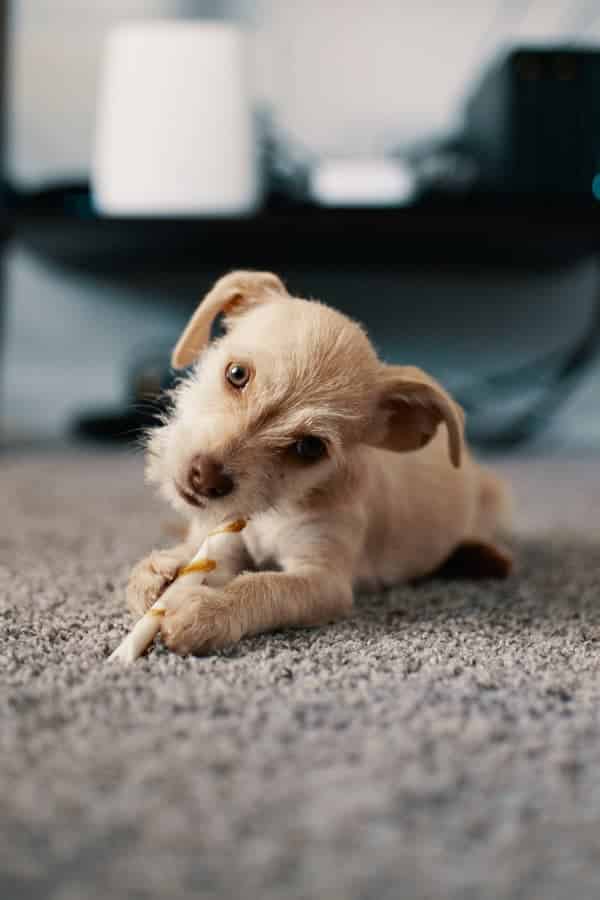Glue traps are usually made of plastic trays or cardboard sheets covered in very strong glue.
Mice, rats and other animals who walk over the glue will instantly become stuck and are powerless to set themselves free. Animals that are caught in these traps can die of dehydration, hunger or exposure.
If you have got mouse trap glue on furnishings, your skin or if you have a pet or child that has had an unfortunate run-in with a sticky trap, then the mess may be everywhere, and you’re wondering how you can get it off.
It might seem overwhelming to remove it from multiple surfaces, but there are some really simple techniques that will work on almost anything.
If you’ve come to notice that the trap is upside-down on the floor, then it’s best to first try and cut off as much of the backing as you can. The container of the traps are usually made of thin plastic, and this will allow you easier access to treat the glue.
In the process of trapping a rodent, the trap can flip over, which can cause the glue to get stuck on the floors. Continue reading below for tips on how to remove mouse trap glue.
There may be affiliate links in this article. You can read more about this in my disclosure.
Is mouse trap glue poisonous?
Glue traps aren’t necessarily poisonous to animals unless it’s digested. However, you should consider glue traps to be detrimental to the safety and health of your pets.
How to remove mouse trap glue from furnishings
Vegetable oil
Before using any product on your furnishings, be mindful to do a spot test in a hidden place first so you don’t ruin any of the materials. Vegetable oil is a safe way to remove adhesive from surfaces.
If you’re not sure whether you want to use something oily to get adhesive off furnishings, then continue on below for more methods.
Put the vegetable oil directly onto a dry paper towel or cloth. Cover the whole of the adhesive with the oil-soaked cloth/paper towel and allow it to sit for a few minutes.
The oil will begin to soften the glue naturally. Once this is done, scrub or blot the adhesive-stained spot with a clean cloth.
You might be able to use your fingernail or a spoon to scrape the softened glue off the surface, but it depends on which surface the glue is stuck to. You can repeat this process until the glue is gone.
Vinegar method
Oil can be difficult to remove from porous surfaces, so the vinegar method is an alternative. Even though vinegar has a potent smell, the best thing is that as it dries, the smell will dissipate.
Grab a clean cloth and dampen it with white vinegar. Place it over the glue and allow it to sit for a few moments.
The exposure to the vinegar will soften the glue. Gently scrub with the same cloth until the glue comes up.
Repeat the process as necessary until all of the glue is removed. You can rinse the area afterwards with clean water if you feel the smell hasn’t gone.
No products found.
Removing mouse trap glue from linoleum
Pull the trap from the floor and use a putty knife to scrape it off, if you’re unable to pull it off by hand. You can use an oil-based lubricant like WD-40 on the area of the floor that has been affected by the glue.
Soak the area with the lubricant and let it sit for up to 20 minutes. The lubricant will break down the glue which will make it easier to scrape off the floor.
Use the putty knife and scrape the glue off the floor. Wipe the glue off the edge of the knife and put it into an old rag.
Spray more lubricant on the area as you scrape, if that’s necessary. Continue with this process until the flue has been removed from the surface.
Spray an all-purpose cleaner on the area afterwards and wipe it with a rag to remove any residue lubricant or glue.
Removing mouse trap glue from your skin
If you do get mouse trap glue stuck on your skin, then you’ll be happy to know it’s an easy process to remove it. You should be mindful to remain calm during the process and to sit down if you’re panicking.
If you become stressed over it, you might make rash decisions which could make the situation worse.
The first thing you’ll want to be doing is to cautiously and gradually pull the trap away from your skin. Whilst you’re doing this, most of the glue will stay on the trap but some will stay on your skin.
Once the trap has been removed from your skin, use a cotton ball to dab the affected area with oil.
You can use olive oil or vegetable oil, but if you don’t have any of these to hand, you can use non-chunky peanut butter. Whatever you use, let it sit on your skin for several minutes.
After that step, use a soft, dry cloth and rub the affected area. The glue will eventually soften and come off.
You might need to repeat the process a few times if the glue is slow to come off. Once you’ve managed to remove all of the glue, wash your hands and the affected area carefully with soap and water.
How to remove trap glue from pet’s fur
If your pet happens to get stuck in a glue trap, you need to act calmly but quickly. Due to the fact pets don’t have hands, they use their mouth to get rid of anything that might be irritating them, and this is what needs to be avoided.
Soak the affected area in any type of oil. Any that you can find around the home whether it’s vegetable oil, canola, olive oil or corn oil.
As you’re pouring it, massage the affected area with your hands until you can see and feel the trap loosening from the fur. You might have to apply generous amounts of oil, but eventually, the trap will release.
To get the rest of the glue out of your pet’s fur, continue to add oil and massage the affected area. When the glue has lifted, ensure to give your pet a bath with soap and water so they don’t ingest any of the remaining residues.
If you notice that your pet has digested some of the residue or glue, you might find it best to contact your veterinarian for further advice.

How to remove trap glue from clothes
Place the piece of clothing in your freezer and let it sit for approximately an hour. This will harden the glue which will diminish the adhesive quality.
Peel the glue off with your fingers. Start peeling from one edge of the glue and work your way to the opposite side.
Remove the glue fast so it doesn’t have the chance to thaw and become sticky again.
If you don’t have a freezer, smear some peanut butter over the adhesive as the texture will alter the sticky quality of the glue. Let the peanut butter sit for a few minutes and scrub it with a cloth to remove the peanut butter and glue.
Wash your clothes in the washing machine with your regular laundry detergent to remove the remaining residue.
How to remove mouse trap glue from hard surfaces
If you’ve got a larger and harder surface with mouse trap glue on it then you can use a non-damaging substance such as oil, which should work safely on most hard surfaces.
If this doesn’t work, or you don’t feel comfortable using oil, you can try and use paint thinner like turpentine or a glue-removal product.
Wait a few minutes whilst the solvent soaks into the glue and then wipe it with a dry cloth and wash with an appropriate cleaning solution. Ensure that you test any substance on a small patch first.

Additional tips
- If you’ve got leather furniture, then this cannot be cleaned with oil. Either use a leather cleaning and conditioning product or have it professionally cleaned.
- If the glue is on a flat surface, you might have more success placing a bag of ice over the sticky spot until it hardens. Once it’s hardened, you can use a blunt-edged object such as a spoon or butter knife to gently scrape the glue away.
- Avoid using any oil or polish on hardwood or other floors unless it is indicated on the product. Floors can become extremely slippery and dangerous even with small amounts of oil.
- If none of the above methods works, then it might be worth using some packing tape onto the glue and pulling it off – as if in a waxing motion. This process has to be repeated a few times for the glue to be completely removed though.
Last update on 2024-04-25 / Affiliate links / Images from Amazon Product Advertising API










